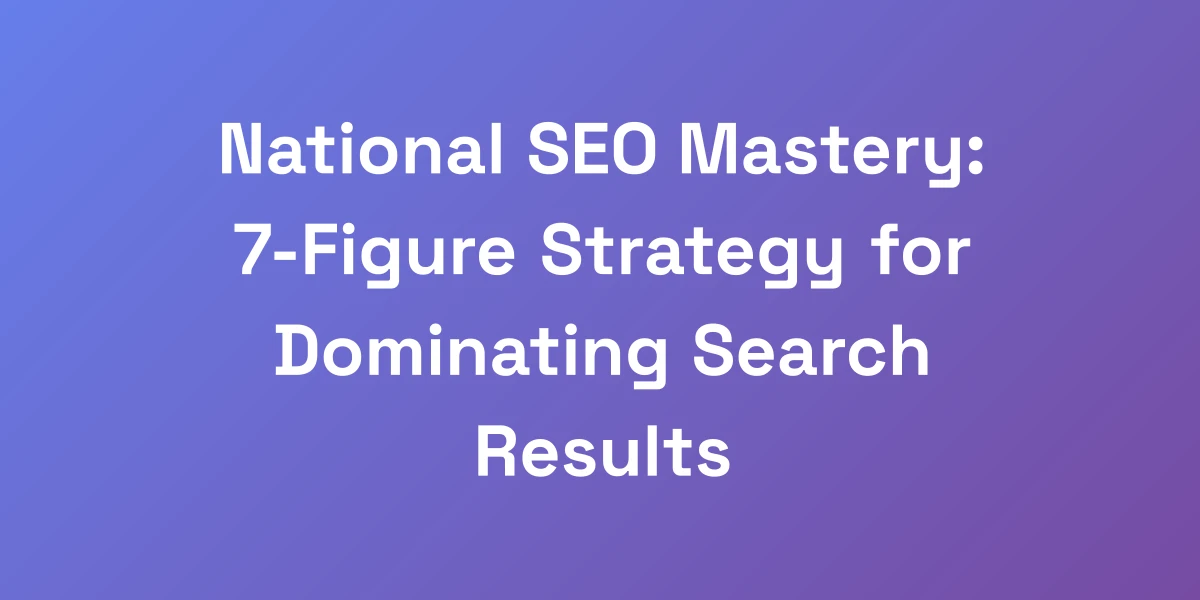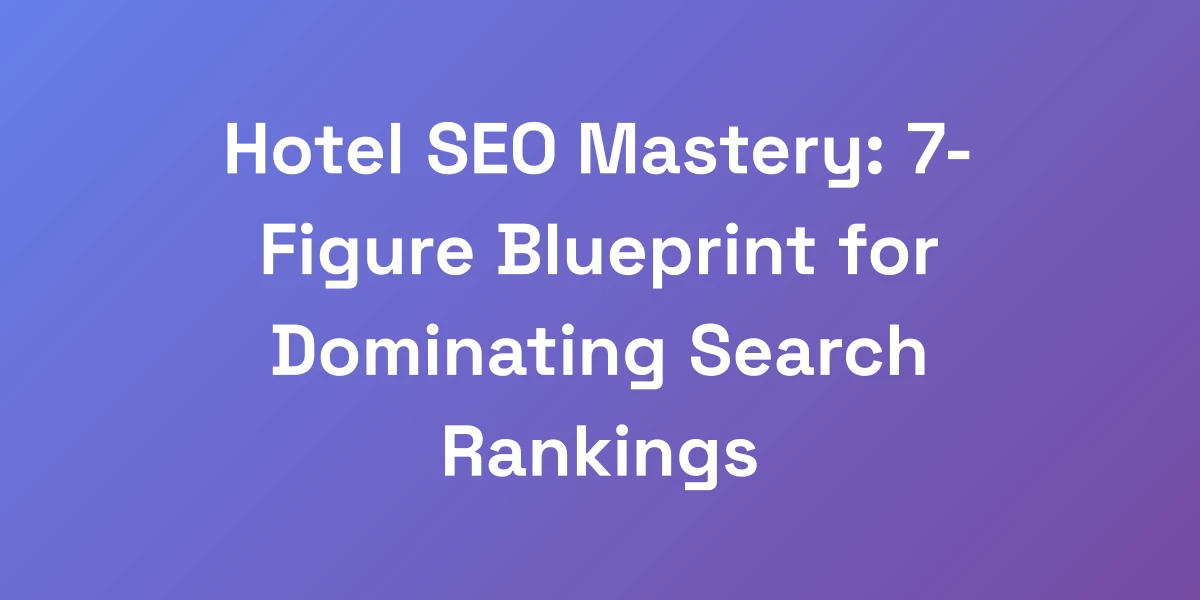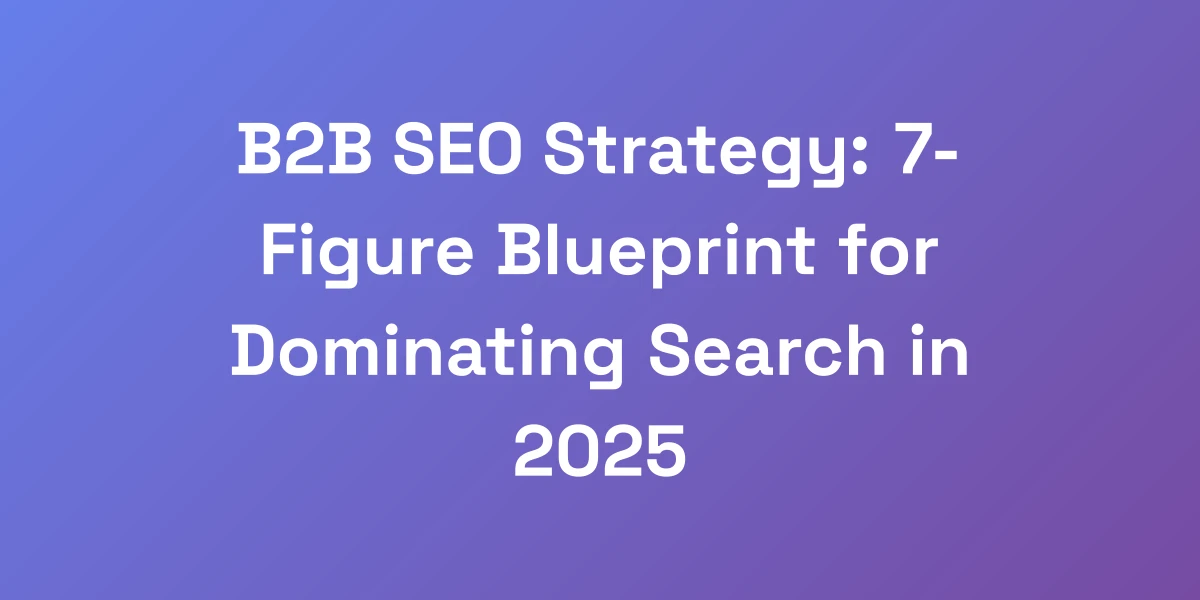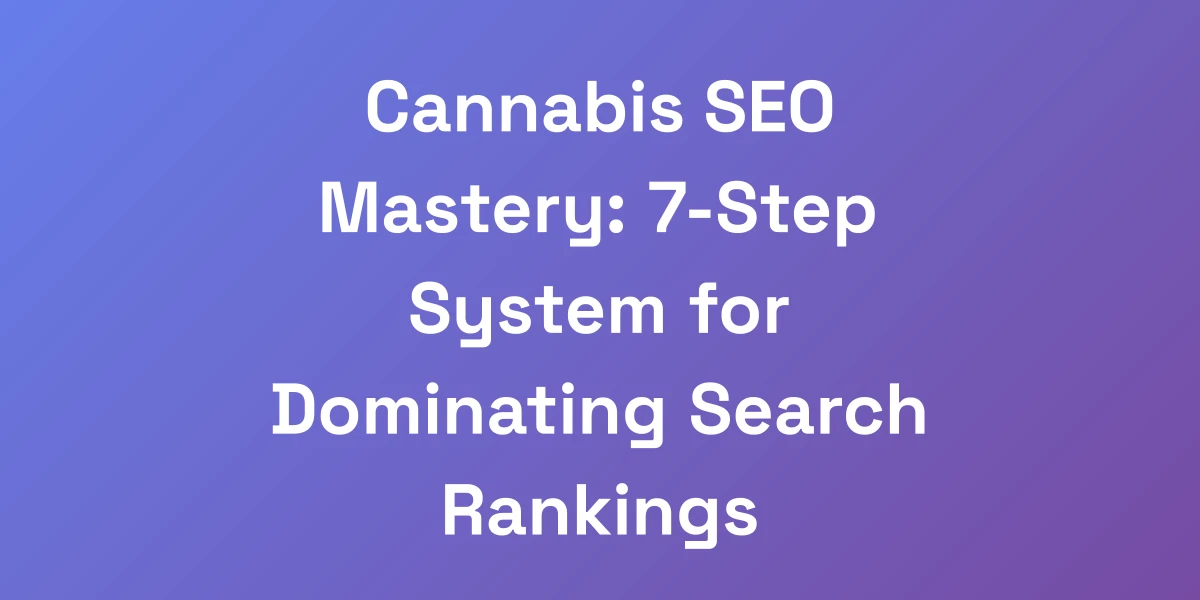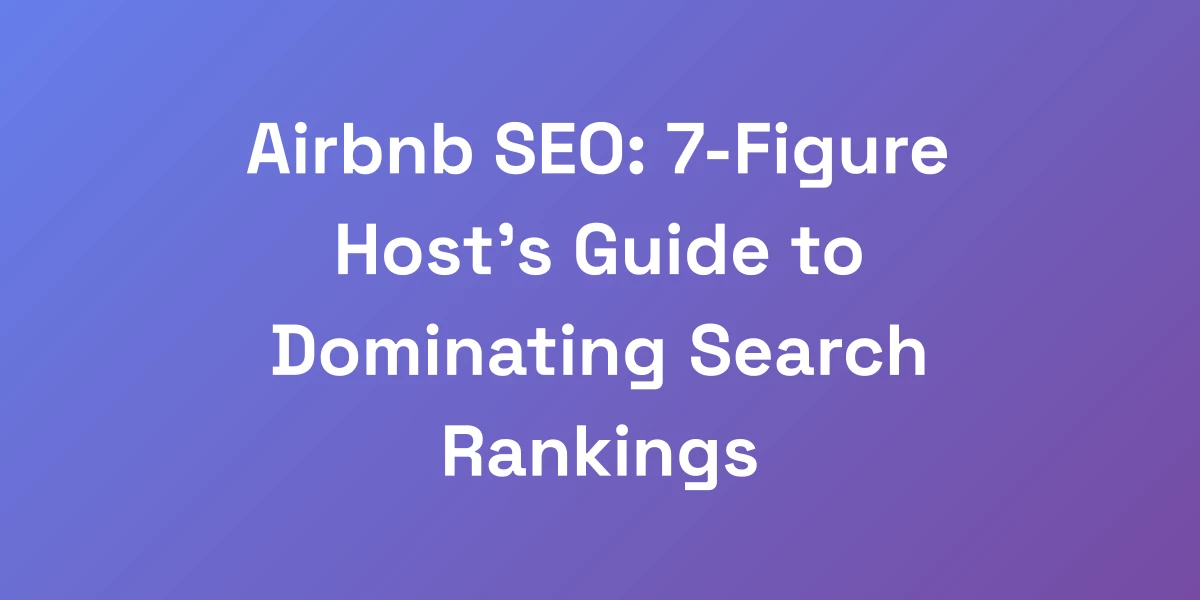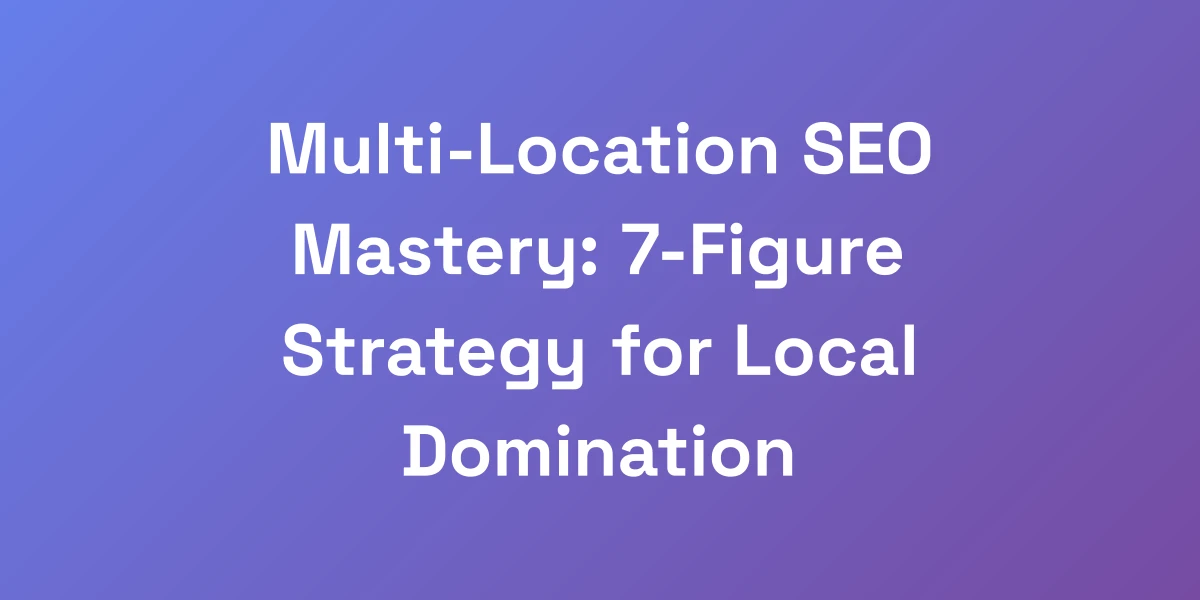
Retail SEO Mastery: 7-Figure Strategy for Dominating Search Rankings
Mar 12, 2025 | By [email protected]
Retail SEO Mastery: 7-Figure Strategy for Dominating Search Rankings
Why Most Retail SEO Strategies Fail (And What Actually Works)
Let me be brutally honest – 90% of retail businesses are burning money on SEO because they’re following outdated playbooks.
We’ve seen it time and again: companies pouring resources into strategies that no longer move the needle.
But here’s the kicker – SEO isn’t about gaming algorithms anymore. It’s about creating an unstoppable machine that converts search traffic into predictable revenue.
Think about it. How many times have you invested in SEO, only to see minimal returns? It’s frustrating, right?
In this guide, we’re sharing the exact framework that consistently generates 6-figure monthly revenue for our retail clients.
No fluff, just battle-tested strategies that work in 2025 and beyond.
The Fatal Flaws in Traditional Retail SEO
Traditional SEO for retail is plagued by several critical flaws:
- Keyword Stuffing: Overloading content with keywords can lead to penalties and poor user experience.
- Ignoring User Intent: Focusing solely on search engines without addressing what users actually want.
- Neglecting Technical SEO: Overlooking site speed, mobile optimization, and secure connections.
- Lack of Local SEO: Failing to optimize for local search, which is crucial for brick-and-mortar stores.
- One-Size-Fits-All Content: Creating generic content that doesn’t cater to specific audience segments.
These mistakes not only waste your budget but also hinder your ability to rank and convert effectively.
The New Profit-First SEO Framework
We’ve flipped the script on traditional SEO with our Profit-First SEO Framework. Here’s how it works:
- Revenue-Focused Keywords: Identify keywords that drive sales, not just traffic.
- User-Centric Content: Create content that addresses specific needs and intents of your audience.
- Technical Excellence: Ensure your site is fast, mobile-friendly, and secure.
- Local Domination: Optimize for local search to drive in-store traffic.
- Continuous Optimization: Regularly update and refine your SEO strategies based on performance data.
This framework isn’t theoretical. It’s a proven approach that has transformed retail businesses into 7-figure powerhouses.
Case Study: How We 10x’d Search Traffic in 90 Days
Take our client, a mid-sized apparel retailer. They came to us struggling with stagnant traffic and low conversion rates.
We implemented our Profit-First SEO Framework:
- Conducted extensive keyword research focusing on high-intent terms.
- Revamped their product pages with optimized content and schema markup.
- Enhanced their local SEO to dominate local search marketing in key markets.
- Improved site speed and mobile responsiveness.
The results? A 10x increase in search traffic within just 90 days and a sustainable uplift in monthly revenue.
This isn’t a one-off fluke. It’s the predictable outcome of a well-executed SEO strategy.
Setting Up Your Revenue-Focused SEO Strategy
Ready to transform your SEO approach? Here’s how to set up a revenue-focused strategy:
- Audit Your Current SEO: Identify what’s working and what’s not.
- Define Clear Goals: Focus on metrics that drive revenue, like conversion rates and average order value.
- Keyword Strategy: Choose keywords that align with user intent and have high commercial value.
- Content Strategy: Develop content that not only ranks but also converts visitors into customers with our digital marketing course.
- Technical Optimization: Ensure your website is fast, secure, and mobile-friendly.
- Local SEO: Optimize your listings and build local citations to attract nearby customers.
- Monitor and Adjust: Use analytics to track performance and tweak your strategy as needed.
Each step is crucial for building an SEO foundation that drives consistent, scalable revenue.
The Ultimate Product Page Optimization Blueprint
Listen up – your product pages are either making you money or losing you money. There’s no middle ground.
After optimizing thousands of product pages, we’ve discovered that three critical elements drive 80% of your SEO success.
Most retailers overcomplicate this, but we’re going to show you exactly how to structure your product pages to maximize both search visibility and conversion rates.
This isn’t theory – these are the exact templates we use to generate millions in e-commerce revenue.
High-Converting Product Page Structure
A high-converting product page follows a strategic structure:
- Compelling Title: Incorporate primary keywords naturally.
- Engaging Product Descriptions: Highlight benefits, not just features.
- High-Quality Images: Use optimized images that load quickly.
- Clear Call-to-Action: Make it easy for customers to purchase.
- Customer Reviews: Showcase testimonials and ratings to build trust.
Each element plays a pivotal role in converting visitors into buyers.
Strategic Keyword Integration
Keyword integration goes beyond sprinkling terms into your content.
Here’s how to do it right:
- Primary Keywords: Use them in titles, headers, and the first 100 words.
- Secondary Keywords: Naturally incorporate related terms throughout the content.
- LSI Keywords: Utilize Latent Semantic Indexing to cover related concepts.
- Avoid Keyword Stuffing: Maintain readability and natural flow.
Effective keyword integration enhances both SEO and user experience.
Rich Snippets and Schema Markup
Implementing schema markup can dramatically improve your search visibility:
- Product Schema: Provides detailed product information to search engines.
- Review Schema: Displays ratings and reviews directly in search results.
- Price Schema: Shows current pricing and availability.
Case studies show that adding schema markup can lead to a 30% increase in CTR and a 20% boost in sales.
Rich snippets make your listings more attractive and informative, driving higher click-through rates.
Mobile Optimization Secrets
With over 80% of retail searches happening on mobile, optimization is non-negotiable.
Here’s how to excel:
- Responsive Design: Ensure your product pages look great on all devices.
- Fast Load Times: Optimize images and scripts to reduce load times.
- Easy Navigation: Simplify menus and ensure buttons are easily tappable.
Mobile-optimized pages not only rank better but also provide a seamless shopping experience.
Image Optimization for Search and Speed
Images are critical for retail, but they can slow down your site if not optimized.
Follow these steps:
- Use Compressed Formats: JPEG or WebP for faster loading.
- Alt Text: Include descriptive alt text with relevant keywords.
- Lazy Loading: Load images as users scroll to reduce initial load time.
- Consistent Sizing: Maintain uniform image dimensions for a cohesive look.
Optimizing images improves both SEO and user experience, leading to higher conversions.
Local SEO Domination for Retail Stores
If you have physical retail locations, this section is your goldmine.
We’ve helped retail chains dominate local search marketing across hundreds of locations, and it all comes down to systematic execution of five core strategies.
The beauty is that most of your competitors are completely ignoring these opportunities, giving you an instant advantage.
Here’s how to own your local market and drive foot traffic on autopilot.
Google Business Profile Optimization
Your Google Business Profile (GBP) is the cornerstone of local SEO:
- Complete Your Profile: Fill out every section, including business hours, contact information, and services.
- Use Relevant Categories: Select the most accurate categories for your business.
- Add High-Quality Images: Showcase your store and products.
- Regular Updates: Keep your information current and post updates or offers.
Studies show that complete GBP listings are 70% more likely to attract visitors to physical stores.
Local Content Strategy
Creating content tailored to your local audience helps you rank better and engage customers:
- Local News and Events: Write about community events or local news related to your industry.
- Location-Specific Landing Pages: Develop unique landing pages for each store location.
- Customer Stories: Share testimonials and stories from local customers.
Local content signals to search engines that your business is relevant to specific geographic areas.
Review Management System
Positive reviews are vital for both SEO and consumer trust:
- Encourage Customer Reviews: Prompt satisfied customers to leave reviews on your GBP and other platforms.
- Respond to Reviews: Engage with customers by responding to their feedback.
- Monitor Review Platforms: Keep an eye on where your reviews are appearing and manage your reputation.
Approximately 92% of smartphone users who search for local information visit a store within a day.
Managing reviews effectively can significantly boost your local search rankings and drive foot traffic.
Local Link Building Tactics
Building local backlinks enhances your authority and improves local SEO:
- Partner with Local Businesses: Collaborate on events or promotions and earn backlinks from their sites.
- Local Directories: Submit your business to reputable local directories.
- Community Involvement: Sponsor local events or charities to earn mentions and links.
Quality local backlinks signal to search engines that your business is a trusted local entity.
Multi-Location SEO Management
Managing multiple locations can be challenging, but with the right approach, you can streamline the process:
- Consistent NAP: Ensure your Name, Address, and Phone number are consistent across all listings.
- Centralized Management Tools: Use tools to manage GBP profiles for all locations efficiently.
- Individual Optimization: Tailor each location’s SEO strategy based on local competition and demand.
A robust multi-location SEO strategy ensures each store ranks well in its respective area, driving more local traffic and sales.
Content Strategy That Drives Retail Sales
Content without a conversion strategy is just digital noise. Period.
We’re going to show you how to create content that actually moves the needle for your retail business.
We’re talking about a systematic approach that turns your blog into a customer acquisition machine.
The key is focusing on high-intent keywords and creating content that naturally leads to product purchases.
Here’s the exact framework we use.
Commercial Intent Content Matrix
Developing a content matrix based on commercial intent ensures every piece of content serves a purpose:
- Awareness: Educational content that introduces your brand and products.
- Consideration: In-depth guides and comparisons that help customers evaluate options.
- Decision: Product-focused content that drives conversions.
By aligning content with the buyer’s journey, we ensure that each piece of content is a step towards a sale.
Product-Led Content Strategy
Focus on creating content that highlights your products in action:
- Product Demos: Videos or articles showing how your products work.
- User-Generated Content: Encourage customers to share their experiences.
- Case Studies: Showcase real-life examples of how your products solved problems.
This strategy not only boosts SEO but also builds trust and credibility, making customers more likely to purchase.
Category Page Optimization
Your category pages are vital for both SEO and user navigation:
- Clear Hierarchy: Organize products logically to help users find what they need.
- Optimized Content: Include relevant keywords and informative descriptions.
- Filters and Sorting: Enhance user experience by offering robust filtering options.
Optimized category pages improve search rankings and guide users towards making a purchase.
Content Distribution Framework
Creating great content is half the battle; distributing it effectively is the other half:
- Social Media: Share content across platforms to reach a wider audience.
- Email Marketing: Use newsletters to distribute your best content to subscribers.
- Influencer Partnerships: Collaborate with influencers to amplify your content.
- Paid Promotion: Invest in paid ads to boost high-performing content.
An effective distribution strategy ensures your content reaches the right people at the right time.
Performance Tracking and Optimization
Tracking the performance of your content is crucial for continuous improvement:
- Analytics Tools: Use tools like Google Analytics to monitor traffic and engagement.
- Key Metrics: Focus on metrics like time on page, bounce rate, and conversion rates.
- A/B Testing: Experiment with different content formats and strategies to see what works best.
- Feedback Loops: Collect feedback from customers to refine and improve your content.
Regularly analyzing performance data allows you to optimize your content strategy for better results.
Technical SEO for Maximum Retail Performance
Most technical SEO advice is pure garbage that wastes your time on things that don’t matter.
Instead, we’re going to show you the 20% of technical optimizations that drive 80% of the results.
These are the exact changes that have consistently delivered massive ROI for our retail clients.
Focus on these elements, and you’ll see immediate improvements in search visibility and conversion rates.
Site Architecture for Revenue
A well-structured site architecture is fundamental for SEO and user experience:
- Logical Hierarchy: Organize your site in a way that makes sense for users and search engines.
- Clear Navigation: Ensure users can easily find what they’re looking for.
- URL Structure: Use clean, descriptive URLs that include relevant keywords.
- Breadcrumbs: Implement breadcrumbs to enhance navigation and internal linking.
Proper site architecture not only improves SEO but also makes it easier for customers to navigate and find products.
Speed Optimization Protocol
Site speed is a critical factor for both SEO and user satisfaction:
- Compress Images: Use tools to reduce image file sizes without compromising quality.
- Minimize JavaScript and CSS: Reduce the number of scripts and stylesheets to speed up load times.
- Leverage Browser Caching: Store frequently used resources locally to speed up repeat visits.
- Use a Content Delivery Network (CDN): Distribute your content across multiple servers to enhance load times globally.
A faster website keeps users engaged and reduces bounce rates, directly impacting conversion rates.
For more insights on optimizing your site speed, check out our guide on SEO optimization automation.
Internal Linking Strategy
Internal linking helps distribute link equity and enhances user navigation:
- Link to Relevant Pages: Connect related products and content to guide users through your site.
- Use Descriptive Anchor Text: Ensure anchor text accurately describes the linked page.
- Create a Sitemap: Submit a comprehensive sitemap to search engines for better indexing.
- Avoid Broken Links: Regularly audit your site to fix any broken or dead links.
An effective internal linking strategy improves SEO by helping search engines understand your site’s structure and relevance.
Mobile-First Implementation
With mobile searches dominating, a mobile-first approach is essential:
- Responsive Design: Ensure your site looks and functions well on all devices.
- Optimized Navigation: Simplify menus and buttons for easy use on mobile.
- Fast Load Times: Prioritize speed on mobile to keep users engaged.
- Touch-Friendly Elements: Design elements to be easily tappable and accessible.
Google prioritizes mobile-friendly websites, making this a crucial aspect of your technical SEO strategy.
Consider leveraging automated SEO tools to streamline your mobile optimization processes.
Technical Audit Checklist
Regular technical audits ensure your site remains optimized and free of issues:
- Check for Broken Links: Use tools to identify and fix any broken or dead links.
- Ensure HTTPS: Secure your site with an SSL certificate.
- Optimize Meta Tags: Make sure titles and descriptions are unique and optimized.
- Review Site Speed: Continuously monitor and improve your site’s loading times.
- Validate Structured Data: Ensure your schema markup is correctly implemented.
Adhering to this checklist keeps your site technically sound, enhancing both SEO performance and user experience.
To automate parts of your technical audit, explore our recommended auto SEO tools.
Conclusion
Mastering SEO for retail isn’t just about following the latest trends; it’s about implementing a strategic, revenue-focused approach that delivers consistent, scalable results.
We’ve walked you through a comprehensive framework, from avoiding common pitfalls to optimizing every aspect of your online presence.
By adopting these battle-tested strategies, you’re not just improving your search rankings – you’re building an unstoppable machine that converts traffic into predictable revenue.
Now, it’s your turn to take action. Start implementing these strategies today and watch your retail business soar to 7-figure heights.
Ready to dominate the search rankings? Let’s make it happen together.
Have questions or need guidance? Drop a comment below or reach out to us directly. We’re here to help you succeed!
For agencies looking to enhance their SEO strategies, consider integrating marketing automation for agencies to streamline your processes and deliver exceptional results.
Additionally, small businesses can benefit from a robust content marketing for small businesses approach to maximize their SEO efforts without overextending resources.
Lastly, explore AI-powered autoblogging and auto SEO tools to further automate and optimize your content creation and SEO strategies.

